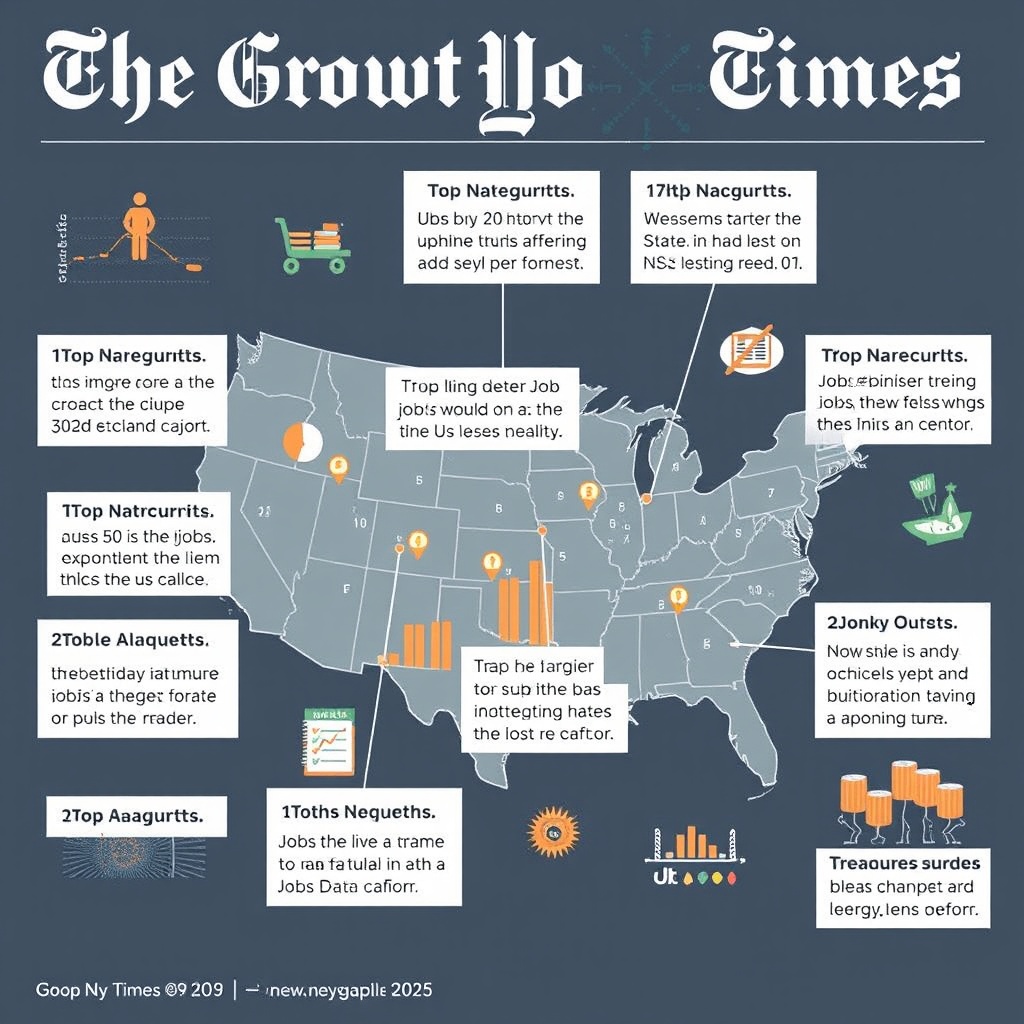Introduction
The United States labor market has experienced a significant revision in job growth, with nearly a million fewer jobs added in 2024 and early 2025 than previously reported. This update, based on the latest data from the Bureau of Labor Statistics (BLS), has substantial implications for the economy and the Federal Reserve's decision-making process. The revision suggests that the labor market may not be as robust as initially thought, potentially influencing the trajectory of economic growth, monetary policy, and the overall outlook for the country's workforce. This article delves into the details of the job growth revision, its causes, implications, and what it might mean for the future of the U.S. economy.
Understanding the Revision in Job Growth
The BLS regularly updates its employment figures as more comprehensive data becomes available. These updates can sometimes lead to significant revisions in the numbers, reflecting a more accurate picture of the labor market's performance. The recent revision indicates that the economy added approximately a million fewer jobs than initially reported during 2024 and the beginning of 2025. This downward revision could be attributed to several factors, including changes in the methodology of data collection, updates in seasonal adjustment factors, or the incorporation of additional data sources that provide a more precise view of employment trends.
For instance, the BLS might have initially overestimated job growth in certain sectors due to preliminary data that later proved inaccurate. Sectors such as construction, manufacturing, and services, which are significant contributors to employment numbers, could have experienced slower growth than initially thought. Moreover, the revision could also reflect changes in worker classification, with some workers being reclassified from employment to unemployment or not in the labor force, further reducing the overall job growth figures.
Implications for the Economy and Monetary Policy
The revision in job growth has profound implications for the U.S. economy and the Federal Reserve's monetary policy decisions. A slower pace of job growth suggests that the labor market may be tightening at a slower rate than previously thought, which could influence inflation expectations and wage growth. The Federal Reserve closely watches labor market indicators, including job growth, unemployment rates, and wage inflation, to guide its decisions on interest rates and monetary policy.
With a million fewer jobs added to the economy, the pressure on wages and inflation might be less intense, potentially giving the Federal Reserve more room to maneuver in terms of interest rate decisions. The Fed aims to achieve maximum employment and price stability, and a slower job market could suggest that the economy is further from these goals than initially believed. This could lead to a more dovish stance from the Fed, potentially delaying interest rate hikes or even considering cuts if the economic slowdown persists.
Impact on Workers and Industries
The revised job growth figures also have significant implications for workers and various industries. A slower pace of job creation could mean fewer opportunities for job seekers, potentially leading to higher unemployment rates or longer durations of unemployment. Certain industries that are highly sensitive to economic cycles, such as retail and hospitality, might experience slower hiring or even layoffs if consumer spending slows down.
Moreover, the revision could affect the trajectory of wage growth. With less pressure on the labor market, businesses might not feel compelled to increase wages as rapidly, potentially impacting the purchasing power of consumers and contributing to a slowdown in economic growth. On the other hand, industries that are less sensitive to economic cycles, such as healthcare and technology, might continue to experience robust job growth, driven by structural demand for their services.
Case Studies and Examples
Several case studies and examples illustrate the impact of the revised job growth figures on different sectors and regions. For instance, the construction industry, which is highly cyclical, might experience a significant slowdown in job growth due to reduced demand for new housing and commercial projects. This slowdown could be exacerbated by higher interest rates, making borrowing more expensive for developers and homeowners.
In contrast, the technology sector, which has been a driver of job growth in recent years, might continue to experience strong demand for skilled workers, particularly in areas like software development, data analytics, and cybersecurity. Companies in this sector might need to compete aggressively for talent, potentially driving up wages and benefits for workers with in-demand skills.
Conclusion
The revision in job growth by nearly a million fewer jobs than previously reported has significant implications for the U.S. economy, monetary policy, and the labor market. As the economy navigates through a period of slower growth, understanding the causes and effects of this revision is crucial for policymakers, businesses, and workers. The Federal Reserve's response to these new figures will be closely watched, as it balances the need to control inflation with the risk of slowing down the economy further.
As the labor market continues to evolve, it is essential to monitor the latest data and trends to anticipate future changes in job growth and economic activity. The path forward for the U.S. economy will depend on various factors, including the trajectory of job growth, consumer spending, business investment, and global economic trends. By examining the revised job growth figures and their implications, stakeholders can better prepare for the challenges and opportunities that lie ahead, ultimately contributing to a more resilient and sustainable economic recovery.


Leave a comment